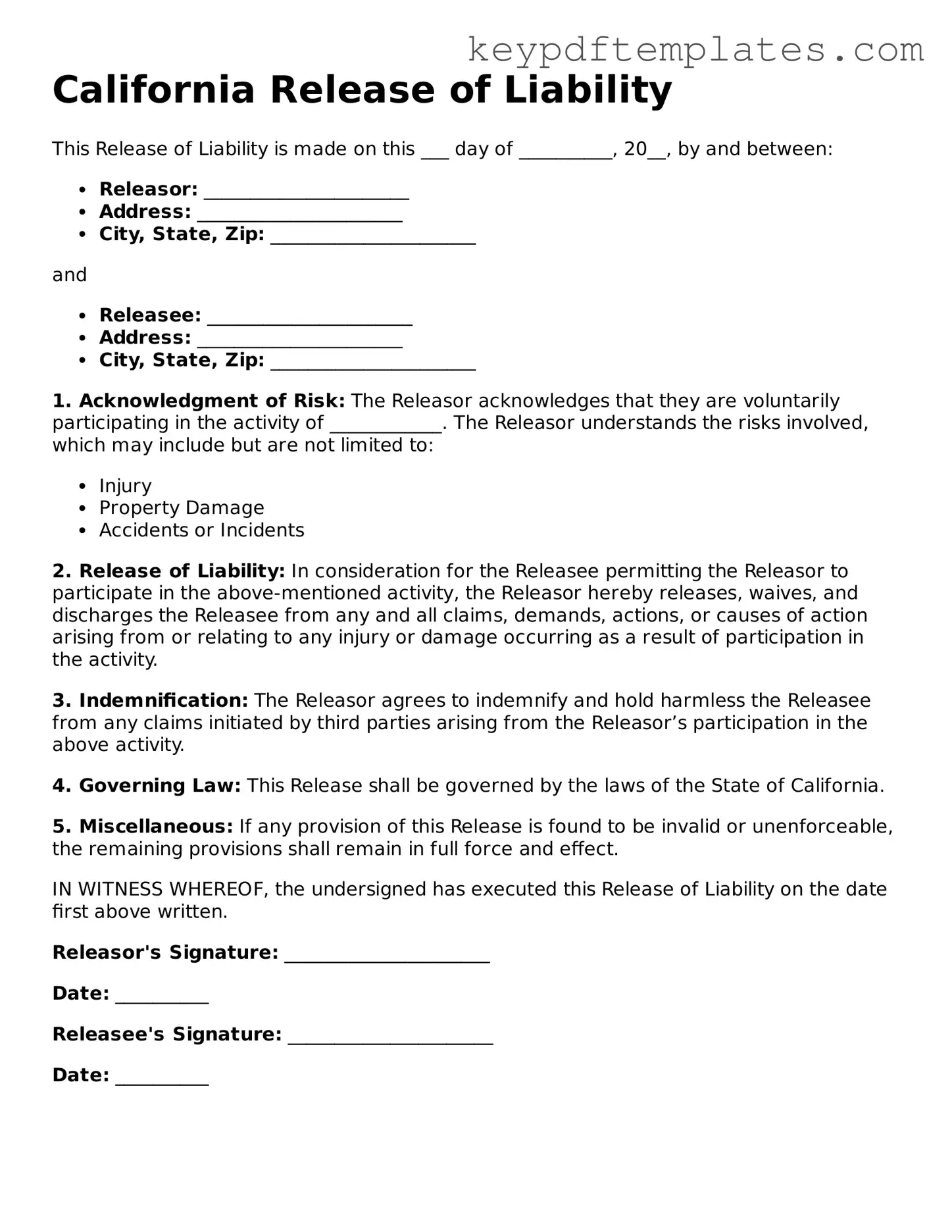When dealing with the California Release of Liability form, several misconceptions can lead to misunderstandings about its purpose and effectiveness. Here are eight common myths, clarified for better understanding.
- Misconception 1: A Release of Liability form eliminates all legal responsibility.
This is not entirely true. While the form can protect against certain claims, it does not absolve a party from liability for gross negligence or intentional misconduct.
- Misconception 2: The form is only necessary for extreme activities.
Many people think these forms are only needed for high-risk activities like skydiving or rock climbing. In reality, they can be useful for a wide range of events and activities, including sports, recreational activities, and even volunteer work.
- Misconception 3: Signing the form means you cannot sue under any circumstances.
This is misleading. While the form can limit certain claims, individuals may still pursue legal action for issues that fall outside the scope of the release, such as fraud or misrepresentation.
- Misconception 4: A verbal agreement is just as effective as a written release.
Verbal agreements often lack the clarity and enforceability of written documents. A signed release provides clear evidence of consent and understanding of the risks involved.
- Misconception 5: All Release of Liability forms are the same.
This is incorrect. Different activities and circumstances require tailored language and provisions. A generic form may not adequately protect against specific risks associated with a particular activity.
- Misconception 6: Minors cannot sign a Release of Liability form.
While minors cannot sign these forms themselves, parents or guardians can often sign on their behalf. This helps ensure that minors are still protected under the terms of the release.
- Misconception 7: The form must be notarized to be valid.
Notarization is not a requirement for a Release of Liability form in California. As long as the form is properly signed and dated, it can be legally binding without a notary's involvement.
- Misconception 8: Once signed, the form cannot be challenged.
While it can be difficult to contest a signed release, it is not impossible. Courts may review the circumstances surrounding the signing, such as whether the signer had a clear understanding of the risks involved.
